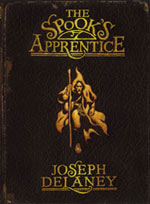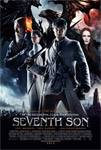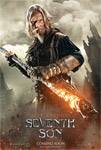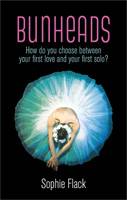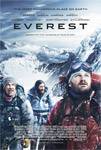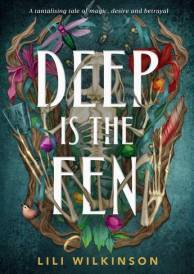Ben Barnes The Seventh Son
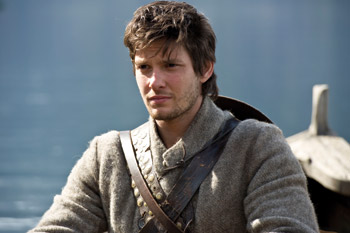
Ben Barnes The Seventh Son
Cast: Ben Barnes, Julianne Moore, Jeff Bridges
Director: Sergey Bodrov
Genre: Adventure, Family, Fantasy
Synopsis: A 18th century adventure story centered on young Thomas, who is apprenticed to the local Spook to learn to fight evil spirits. His first great challenge comes when the powerful Mother Malkin escapes her confinement while the Spook is away.
The Seventh Son
Release Date: February 26th, 2015
About the Production
From Page to Screen: Seventh Son Begins
Author Joseph Delaney, whose book series 'The Last Apprentice" has become a worldwide phenomenon, explains how the adventures of Master Gregory and Tom Ward all began: 'I used to teach in Blackpool, and nearest my place of work, my wife and I found a village called Stalmine, where we bought a house. About a week after we moved in, I found out the church at the top of the road once had a boggart called the Stalmine Hall Knocker, a poltergeist. It used to plague the church"it pushed over tombstones, rattled the church doors, scared the parishioners"and so they brought in the priest. The priest eventually said the right prose and bound the boggart."
It turns out that this was one of many ghosts that Joseph Delaney would encounter in his storied hamlet. 'Just north of where I live is the Hackensaw Halls, a very old house with a horse boggart, which is heard to click-clop up and down the lane," he shares. 'Then there's Lancaster Castle, which is where the real Pendle witches were hanged. Lancashire is riddled with boggarts, so I drew upon these folktales. You can send for the priest, but the priest is probably scared and won't do much good anyway, so I invented the Spook. He is the expert; he's the exorcist, the dealer with the dark."
It would be another 17 years, however, before the stories Joseph Delaney kept in a notepad of ideas would turn into 'The Spook's Apprentice," written in 2000 after his agent informed him of a publishing opportunity. First released in the U.K. in 2004, the book would lead to 'The Wardstone Chronicles" series and would eventually be translated into several languages and sold in 24 countries, including the United States as 'The Last Apprentice: Revenge of the Witch."
Even before the book's release in the U.S., producers at Thunder Road Pictures had discovered the intriguing tale while on a trip to London. 'We've been working on the project for almost a decade now," says Seventh Son co-producer Erica Lee. 'One of my co-workers and Basil [producer Iwanyk] had met with several London literary agents, and we brought back a number of books. This was one of them. We fell in love with it and pitched it to Warner Bros., who optioned it right away. It's been a long process since then, but the themes and the characters struck a chord with us."
What intrigued the producers was how to tell the filmic version of a story about ancient magical forces challenged by the knowledge of Master Gregory and the Falcon Knights who served before him. 'The reason that -The Spook's Apprentice' is so fantastic is that it demythologizes magic," says Basil Iwanyk. 'It makes fighting these magical creatures more of a craft or a science than something fantastical. A Falcon Knight is not a wizard; he is a knight/soldier who has to study each creature's strengths and weaknesses, how they can be killed or harnessed. He has to know not only how to defeat them physically but intellectually. Knights do not use magic; they use science. Master Gregory has a big library of books, filled with knowledge from the past, and each knight writes his own books to pass on to the next generation of knights. They use natural weapons: rowan wood, silver, salts and iron…fighting dark magic with knowledge. That idea dovetailed into the movie because we realised that we wanted it to feel as real as possible."
Though not condoning Malkin's ultimate choices, Basil Iwanyk concedes that the witches were not to blame for the animosity that developed between them and humans. That informed the screen story and screenplay, and made for a fascinating antagonist in Malkin. The producer shares: 'Historically, there was a lot of mistrust of witches and thousands of people were killed or tortured because they were suspected of witchcraft. But witches initially weren't evil. It's just that mankind usually destroys anything or anyone they don't understand. Now the witches are fighting back. Their leader and strongest witch, Mother Malkin, has escaped prison, there's only one Falcon Knight left, Gregory, and soon there will be a blood-red moon, the most powerful time for witchcraft. Malkin realises this is the perfect opportunity to reclaim their world. Witches have never been stronger."
To get the film green-lit, the principals turned to their colleagues at Legendary Pictures for assistance. Legendary loved the project and jumped at the chance to make it, believing it dovetailed into its wheelhouse of large-scale intellectual property. 'At Legendary, we make things that we're passionate about," says co-producer Jillian Share. 'For us, it's not just a business; we try to make things that are popular but elevated, that play out heroes and myths and all the things we loved growing up. Seventh Son fits right in line with what Legendary does."
When Legendary struck a multiyear distribution deal with Universal Pictures in summer 2013, Seventh Son came along with the filmmakers and was given an early 2015 release date.
The writers of the epic action-adventure used the fascinating backdrop that Joseph Delaney provided while elaborating upon their own ideas for the tale of Master Gregory and Tom Ward. Adding to Tom Ward's excitement about learning that he is the last in the line of Seventh Sons is a need to prove himself to Gregory"to give credence to Mam's assertions that her son's destiny is much greater than 'chasing pigs." The master, though, is not easily impressed, and serious mistakes made by Tom early in his training do little to alleviate Gregory's sense of impending doom about stopping Malkin. It also does not help that Gregory has little compassion left in a heart hardened by personal tragedy and an occupation that's, at times, unrewarding.
For Thunder Road, the film would provide an opportunity to work with Russian director Sergei Bodrov, whom they had been chasing for years. 'Sergey Bodrov is a director that we had always wanted to work with," recalls Erica Lee. 'We'd seen Mongol and were very impressed. We had given him a lot of scripts over the years and were looking for the right fit, so when we heard that he was interested, we were very excited. Visually, Mongol was stunning, and we knew that the way Sergey Bodrov tells a story would translate perfectly to Seventh Son."
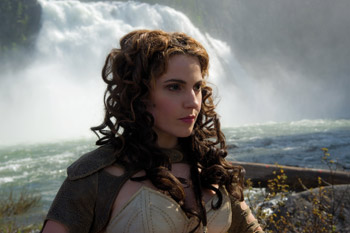 Bringing in a foreign director also provided a fascinating perspective. Basil Iwanyk shares: 'The challenge of a movie like this is to get a filmmaker with a different point of view so it doesn't feel similar to all the other movies in this genre. Sergey Bodrov's take was so different and so much more interesting than that of the other directors we approached, and we felt he would give Seventh Son an international feel and make it unique. What we also suspected, and which proved true, was that a lot of people both in front of and behind the camera would want to work with Sergey Bodrov because he is such a beloved and enigmatic figure."
Bringing in a foreign director also provided a fascinating perspective. Basil Iwanyk shares: 'The challenge of a movie like this is to get a filmmaker with a different point of view so it doesn't feel similar to all the other movies in this genre. Sergey Bodrov's take was so different and so much more interesting than that of the other directors we approached, and we felt he would give Seventh Son an international feel and make it unique. What we also suspected, and which proved true, was that a lot of people both in front of and behind the camera would want to work with Sergey Bodrov because he is such a beloved and enigmatic figure." The filmmakers were confident in Sergey Bodrov's ability to take the source material and make it his own. '-This book series is beloved by many," commends Share. 'Joseph Delaney created a world and characters that are relatable and exciting, and we wanted to be sure that we kept that aspect of the book. With any adaptation, you struggle to remain loyal to the book while at the same time opening up the movie. Sergey Bodrov did a fantastic job of taking what was there and making the scope much bigger and the action more visceral."
While honored by the kind words, Sergey Bodrov is quick to pass the praise onto his cast and crew. He shares: 'It's not only my vision; I had amazing people around me, like Dante Ferretti, Tom Sigel, Jackie West, John Dykstra, a wonderful story based on a great book and a fantastic cast. We took the story to another level, something fresh and original." He pauses. 'It's a journey you take with others and if you have great people around you, you will be fine."
Falcon Knights and Witches: Casting the Epic Action-Adventure
Sergey Bodrov's international approach would turn out to be more than a personal predilection. The original story is set in England but Sergey Bodrov wanted this film to speak to audiences around the world. He took the story out of this part of Europe and into an unspecified land inhabited by all races, a medieval international village, and cast his net far and wide for his team. It was time to secure the talent Sergey Bodrov and the producers felt would do the story justice.
For Master Gregory, explains Basil Iwanyk, the team needed an actor who 'could play grumpy and taciturn and irascible, aged but still lively and youthful, charming when he wants to be and has a great physicality." The filmmakers felt that Oscar® winner Jeff Bridges fit that bill. 'He's always been one of the best American actors, and he's a true box-office draw, having established those credentials with films like TRON and True Grit. There are a lot of actors who feel very familiar in movies in this genre and we knew Jeff would bring his own spin to this, which he has. He created this incredible character."
'Master Gregory is somebody who has got a lot of miles on him and is very weary," elaborates Share. 'He has the burden of keeping the forces of evil at bay, yet without the appreciation of those he helps. They want him around when there's trouble, but they don't want his friendship. Jeff Bridges does an amazing job of capturing that pain, and there's great character work here."
The actor agreed to the role of the last surviving member of an ancient order of elite warriors, and now shares the reasons that inspired him to get involved with Seventh Son: 'One of them was the wonderful book that Joe Delaney wrote. The story is just a bit darker, a bit edgier than the classic fight between good and evil; things are not so black and white. The other was the chance to work with Sergey Bodrov. I saw his film Prisoner of the Mountains"a wonderful film"and also Mongol, and I knew that if he were in charge, we'd be in good hands."
Jeff Bridges discusses that his director's style was very needed in a physically challenging role: 'Sergey Bodrov is now one of my favorites. His type of direction, which is very inclusive, encourages you to give all you've got. He's not afraid to change things at the last minute. He's assembled these artists, these magicians, together and he trusts them. He creates the space for all of this to happen. It's almost just as important what you don't say as what you do say. Sergey Bodrov has a very light touch with his direction, and he was wonderful to work with."
Unable to fight the coming war alone, and with Bradley dead at the hands of the vengeful Mother Malkin, Gregory sets off to find a new apprentice and potential heir. A key requirement, however, greatly limits the pool of potential candidates. Jeff Bridges provides a bit of backstory: 'Master Gregory is the last surviving member of a brotherhood of Falcon Knights who were all seventh sons of seventh sons. To be the seventh son of a seventh son is to be seven times as strong, as smart and as courageous as a normal man. Of course, that's quite a rare thing, but it's what Gregory needs to fight these evil forces. Right now, there's only one young lad who meets those requirements, Tom Ward."
The son of a pig farmer, Tom Ward has long felt alienated and troubled. Plagued by visions and fits reminiscent of epileptic seizures, Tom sees these fugue states as a disability, a weakness. So does his family. Ben Barnes, who has met much success in this genre with the title role in The Chronicles of Narnia: Prince Caspian and a stirring turn in Stardust, shares: 'Tom's father and siblings are quite dismissive of him. They don't think he's good for anything. Then this mysterious man turns up whom Tom's been dreaming of and who essentially purchases him from his family."
The wariness between master and apprentice was mirrored in the on-set dynamics between the actors. Ben Barnes confirms what others saw on set: 'I was terrified when I met Jeff Bridges. In person, he's a big man with a big presence, and he has these striking blue eyes that focus right on you. So I knew he was sizing me up. He also has this method approach to acting: Gregory doesn't choose Tom, he's forced to take Tom on as his apprentice, so there is this dismissive way in which Gregory treats Tom, bullying him and not taking him seriously even though he knows that he needs him. I figured Jeff Bridges was going to treat me like that too at the beginning, sort of test my mettle. I was intimidated for the first few weeks."
As the relationship in the film became more fruitful, so did the performers' in real life. Shares Ben Barnes: 'The ice just broke between us, and he talked me through his approach to the various scenes we did."
While Tom may be confused by the sudden arrival of Master Gregory at the Ward farm, one person always knew this day would come. 'He's the runt of the litter of my many children," laughs Olivia Williams of The Sixth Sense and Rushmore, who plays Tom's mother, Mam. 'I think that mothers have a stronger connection with a child whom they perceive as weaker…or have a condition that makes them vulnerable. Mam has always known that his dreams were visions rather than hallucinations. She had a sense that one day something was going to come along that would mark Tom as having an extraordinary destiny."
Yet there is more to this than a mother's instinct, information that will ultimately both strengthen Tom and cost him dearly. For now, though, Mam keeps her silence. As she bids farewell to her son, never knowing if she will see him again, she gives him her pendant necklace and pleads that he wear it always. Unbeknownst to Tom, the necklace has more than sentimental value: it is the Umbran Stone, and its history is as complicated as Mam's.
Mam proves to be one of several women who will influence Tom's destiny. The one who could end his work as an apprentice as soon as it begins is Mother Malkin, the mighty witch whose heart is blackened by betrayal and heartbreak. Landing Golden Globe Award winner Julianne Moore to play Master Gregory's nemesis, reveals Iwanyk, was a real coup. 'It's hard to cast a wicked witch because if the actress isn't good it could feel very campy and over the top," he says. 'So we needed a great actress and someone who is a relative contemporary of Jeff Bridges because they have a backstory. We didn't want a 25-year-old ingénue to play Mother Malkin; we wanted someone that had life experience and wisdom"and we needed someone who could be scary when she wanted to be. Julianne is one of the greatest actresses working today, and we knew that she would be an amazing villain. She is a wonderful combination of terrifying when she wants to be, incredibly charming when she needs to be, beautiful and sexy, and a great foil for Jeff Bridges. They have an incredible chemistry."
For Julianne Moore, accepting the role of Mother Malkin, who still harbors feelings for her former lover, Master Gregory, meant the opportunity to play a unique character, as well as to reunite with an old friend. She and Jeff Bridges had not worked together since 1998's The Big Lebowski, but she was up for the challenge. 'I had never played a wicked witch before," laughs Julianne Moore. 'I thought it would be fun. Jeff Bridges's wonderful to hang around with, and as an actor and human being, he's endlessly creative, thoughtful and curious in the world around him. To be able to work with somebody as skilled, as present and as talented as he is, is a real pleasure."
Julianne Moore gives us a bit of background on Malkin: 'I'm the head witch and Gregory's nemesis, someone with whom he has a history. I'm terribly wicked but only because we witches have been persecuted for centuries by humans, hunted down and tortured." Forced into the dark arts in self-defense, Malkin began practicing blood magic, a form of witchcraft that involves draining the blood of victims to absorb their energy. 'She's not called Mother Malkin because I'm anybody's mother," adds Julianne Moore. 'It's because she used to lure pregnant young women with no place to go with the promise she would take care of them and their babies, and then I drank the babies' blood. It made me more powerful."
The performer concurs with her on-screen sparring partner that creating the world of Seventh Son would not have been possible without Sergey Bodrov's deft directorial touch: 'Even though this is a fantastical world, Sergey Bodrov wanted genuine emotional moments in it. There are real relationships among these characters, and that's what he was interested in exploring within this big action-adventure story. He was just so articulate and interested in the process. He's incredibly sensitive and artistic."
While Malkin might be the most powerful necromancer in this universe, there is one for whom even she must watch out: a beautiful and powerful half witch named Alice, destined to fall for a Falcon Knight herself. For the role, the filmmakers turned to Swedish actress Alicia Vikander. A former student of the Royal Swedish Ballet School and the daughter of an actress, Vikander had made a name for herself in her homeland, but was unknown to worldwide audiences. By chance, Iwanyk had seen her in a Swedish movie and believed in her potential. He shares: 'She had such an interesting look, and we were all completely taken with her. Alicia made an audition tape, and the scene that she auditioned with was so incredibly sexy, emotional, ethereal and otherworldly that we knew from that self-made tape that we would hire her."
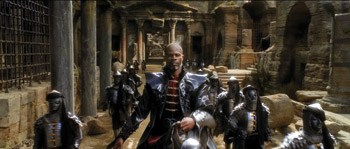 Seventh Son is Vikander's first English-language film, and certainly her largest, which proved daunting at times. 'I had never been on sets that big," she divulges. 'There were over 200 people on set every day. The fact that I was working in English made a big difference because I needed to learn everything and have it stored in the back of my head. Finding my character and being honest in the role could never come second place."
Seventh Son is Vikander's first English-language film, and certainly her largest, which proved daunting at times. 'I had never been on sets that big," she divulges. 'There were over 200 people on set every day. The fact that I was working in English made a big difference because I needed to learn everything and have it stored in the back of my head. Finding my character and being honest in the role could never come second place." The star-crossed lovers first meet when Tom and Gregory make their way to the Walled City for provisions. With Gregory off drinking at the tavern, a lone Tom encounters a mob dragging a mysterious young woman through the streets, claiming she is a witch and intending to dispose of her. Eager to be the hero, Tom intervenes, using his status as Gregory's new apprentice to trick the townsfolk into relinquishing the girl into his custody. Believing the beguiling beauty could not possibly be a witch, Tom releases her and finds himself ensnared instead. 'He can't get her out of his head after that moment," says Ben Barnes. 'Even after Alice later reveals to him that she is a half witch, it doesn't bother him because she doesn't seem evil. It's Alice that starts the wheels turning in his head that maybe witches are more like people; there's good and bad in everyone. Unfortunately, she doesn't only surprise him for the better; there will be elements of disappointment and betrayal."
That Alice is half witch is further complicated by her lineage. She is the daughter of Bony Lizzie, Mother Malkin's faithful servant, blood sister and co-conspirator in the plot to destroy humanity. Named for her use of bone magic, a form of necromancy using the bones of dead enemies, Bony Lizzie has become a decrepit hag in the intervening decades, robbed of her beauty and power by the unrelenting harassment of Master Gregory. German actress Antje Traue, whose stunning turn as Faora-Ul in Man of Steel blew audiences away, shares: 'Bony Lizzie is a starved, desiccated creature who's been waiting for Malkin's return for so many years. Through Malkin's touch, Lizzie's youth and beauty is restored, and I wanted her to return to being a very feminine woman. This reinforces her devotion."
Alice, too, feels a devotion to Mother Malkin, for in the sisterhood of witches there is a place for Alice, one not offered to her in the outside world. There, she is an outcast, a gypsy living off her wits, theft and fortune-telling. 'Alice is very lonely," explains Vikander. 'In that loneliness she has become very tough; she has that darkness in her. When Mother Malkin returns, Alice is thrilled because she thinks that finally there will be somewhere that she belongs, where she can feel at home being a witch."
But Alice's attraction to Tom, a human and a Falcon Knight-in-training no less, is creating a conflict of loyalties. As their attraction deepens with each encounter, Tom and Alice find themselves in an impossible love triangle where the third party is not another person but duty. 'It's a Romeo and Juliet paradigm," explains Basil Iwanyk. 'These two young people who are not yet fully formed, wondering whom they are supposed to become, fall in love. The fact that they fall in love with the enemy only underlines their confusion. Their relationship reflects the central theme of the movie, which is that there is no black and white, there is goodness and evil in everybody; they coexist and you cannot deny that."
It does not help Tom's discipline and studies when he learns that he is the third wheel in a long friendship between Master Gregory and Tusk (John Desantis of TV's Falling Skies), a troll-like creature who lives in isolation in the woods that surround the Walled City.
'Tusk is the only being Gregory trusts," explains Jeff Bridges. 'Tusk is the last of his kind, and no one has any idea what the hell he is. He's a very large beast with a big gnarled mess of toothlike tusks. He's smart and reliable and, while he can't speak, he definitely seems to share Master Gregory's ideals. Tusk is strong and loyal and makes a great fighting partner for Gregory."
Tusk is perhaps the most obvious embodiment of the film's theme of the misunderstood outcast molded by the forces of human ignorance. 'Tusk lives in the wild, lives off the land," explains 6-foot-9-inch DeSantis. 'He doesn't like being near humans because he is a target for everybody's aggression and ignorance." Never having learned to speak, Tusk expresses himself physically, which DeSantis says is also how he interprets life. 'Tusk walks around with two swords, one slung over his back and one slung on his hip, but never uses either one of them," the actor shares. 'Instead, he's always picking up opponents, tossing them around, beating them down, using only his hands. My character's a very blunt instrument."
Rounding out the stellar supporting cast are Malkin's lieutenants: Djimon Hounsou as Radu, the mighty Eurasian warlock who possesses a deadly set of 50-foot flails and the ability to morph into a dragon, and who travels with a guard of 12 assassins; Jason Scott Lee as Urag, the Siberian warlock with the ability to turn into a massive grizzly bear; Kandyse Mcclure (TV's Hemlock Grove) as the African witch, Sarikin, who becomes a whirlwind of armed fury when provoked, and who travels incognito as a leopard; Zahf Paroo (The Big Year) as the blue-skinned Indian warlock, Virahadra, who sprouts a second pair of arms when confronted in battle; and Luc Roderique (Godzilla) as Strix, the Amazonian witch with the spiderlike ability to scale walls and jump between structures. Each will submit their deadly magical talents to the cause and, while their support for their queen is more a product of fear than loyalty, their shared hatred for a common enemy ensures unity.
Djimon Hounsou reflects that he felt a strong connection to the tale: 'I felt the story taking me back to my origins in Africa. We have stories of witches turning into lions or some other animal. Having been raised in Europe, I found some similarity to the occult stories there."
A Trip around the World: Locations and Design
To film the epic action-adventure, production utilized several locations around Alberta and British Columbia. The eerie landscape of Drumheller, Alberta, served as the film's opening location: the site of Mother Malkin's imprisonment. Nearby Kananaskis Country's Fortress Mountain, with its mesa on top and unique geology, stood in for Pendle Mountain, where Malkin rallies her lieutenants. In B.C., the remote Widgeon Slough, nestled in the coastal mountains of Pinecone Burke Provincial Park, served multiple duties"with its large freshwater marsh, nearby river and grassy plains that give way to the rainforest. As well, Lynn Canyon, only minutes away from the soundstages in Vancouver, provided the essential backdrop to the critical ambush scene in which Gregory is captured by Radu.
Producer Basil Iwanyk explains why Lynn Canyon was so crucial to the film: 'It was important to get the right place because this is where Gregory gets captured. Gregory is probably the greatest Falcon Knight in the history of the Knights, and even though he's been outnumbered in the past, he had never been captured before. We designed a sequence where they are ambushed on a cliff, so there's nowhere to run. In Lynn Canyon, there are caverns and cliffs with great drops into chasms that are dangerous, and we needed that danger in the location…while still being safe."
Perhaps the most memorable location, though, was Ward farm, built on the beach of the ethereal Minaty Bay, on the eastern shore of nearby Howe Sound. In the picturesque isolated bay, the design team assembled the pieces of the Ward homestead, constructed to resemble a small subsistence farm built on the ruins of an earlier, possibly Roman, farm.
'Conceptually, we based it on a Norwegian-style cabin," says art director Ross Dempster (Godzilla, The Grey), 'but built on a foundation of stone ruins. Imagine a shotgun shack where you have one door in and, straight ahead, you have the rear door out. It's an open space where they live, eat and sleep. There's a stove and large fireplace to keep everybody warm."
Outside there are several livestock"piglets, sows and some cows"in a barn, also built on stone ruins, and in pens fenced with twigs woven into lattice. The set took about 12 weeks to complete, begun in studio then assembled in situ and dressed over a period of about six weeks.
In addition to the natural beauty of the locations, everyone agrees the film truly shines with production designer Dante Ferretti's extraordinary studio sets. The sets were some of the largest ever built in Vancouver, and to realize his vision, Ferretti relied upon a dream team consisting of supervising art director Grant Van Der Slagt (Rise of the Planet of the Apes, upcoming Warcraft), art directors Michael Diner (Mission: Impossible"Ghost Protocol, X-Men Origins: Wolverine) and Dempster, set decorator Elizabeth Wilcox (Godzilla, Rise of the Planet of the Apes), construction coordinator Doug Hardwick (The Twilight Saga: Breaking Dawn"Part 2, upcoming Fifty Shades of Grey) and all their crews. At any one time, an impressive 200 to 300 people were building or dressing the sets.
Three key sets stand out: Mother Malkin's castle atop Pendle Mountain, the Walled City (where Tom and Alice first meet) and Master Gregory's lair. Prior to arriving in Vancouver, Ferretti built a large model of the Walled City at his studio in Rome, then shipped it over in several containers. The largest of the three sets was Mother Malkin's castle on Pendle Mountain, inspired by a cornucopia of influences, including Persian, Nabataean, Arabian and Turkish.
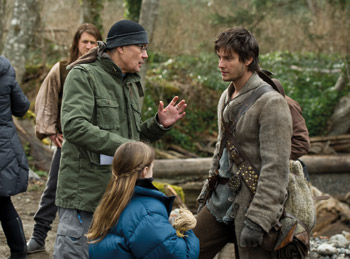 The three-time-Oscar®-winning production designer explains his inspirations: 'Many years ago, I made a movie with Pier Paolo Pasolini called Arabian Nights, and I was fascinated by this kind of architecture. Normally this kind of movie is always gothic-style English. -But why?' I asked Sergei. -They've already made eight or nine Potter films, and others similar, and it's always England. Why don't we go around the world? You're Russian, you like China, and I am inspired by Sanaa, Petra, Iran, Eritrea, Morocco, the Persian Gulf, ancient Rome, all these places.' So we invented a new world. It's a place where you don't know exactly where you are and this is the idea. It is like a trip around the world; you see many cultures, many different people and styles."
The three-time-Oscar®-winning production designer explains his inspirations: 'Many years ago, I made a movie with Pier Paolo Pasolini called Arabian Nights, and I was fascinated by this kind of architecture. Normally this kind of movie is always gothic-style English. -But why?' I asked Sergei. -They've already made eight or nine Potter films, and others similar, and it's always England. Why don't we go around the world? You're Russian, you like China, and I am inspired by Sanaa, Petra, Iran, Eritrea, Morocco, the Persian Gulf, ancient Rome, all these places.' So we invented a new world. It's a place where you don't know exactly where you are and this is the idea. It is like a trip around the world; you see many cultures, many different people and styles." Damaged by decades of war and eventual disuse, Pendle Mountain is a crumbling array of thick stone pillars, massive carved heads reminiscent of Nemrut Daği in southeastern Turkey and an elaborate carved wall similar to the qibla wall that one might find in an ancient stone mosque. Behind its doors lies Malkin's private quarters, which, with a wave of her cursed hand, are restored to their former opulence. Inspired by the once glorious Persian city of Isfahan, the room's architectural features include intricate lattice and tile work on the walls and ceilings, inlaid marble floors and heavy carved wooden doors. It was then dressed to resemble the lush world captured in the Orientalist paintings that once captivated the imaginations of Europeans. In fact, the throne room in Ferretti's illustration was based on Orientalist paintings with seminude women lying around in pantaloons with servants fanning them, surrounded by layers of fabrics and carpets and carved furnishings. Malkin's private quarters are at once intricate, luxurious and ostentatious, truly befitting the queen she imagines herself to still be.
It is somewhat ironic that, like Malkin's claims of absolute power, her palace is illusory. 'Pendle Mountain took just under two months to complete," says Ferretti. 'They did a fantastic job in very little time because most everything is fake. It's foam. But we had very talented people: it's all painted by hand. The quality is simply fantastic."
In keeping with Ferretti's theme of large and intricate, the Walled City rivaled the Pendle Mountain set in its scope and objectives. With its thick walls of grey brick, latticed windows and dirt streets, the Walled City resembles a medieval European town, except that this is a city at the crossroads of cultures"one with Byzantine, Turkish and Eastern European influences. Its inhabitants seem to have arrived from all corners of the globe and different eras, so much so that you have no idea where you are or exactly when, and must simply immerse yourself in this world of witches, knights and the townsfolk caught in the middle of the supernatural war.
The scene of the massacre during market day"when Malkin's lieutenants attack"is the largest and most ambitious of the film. The level of detail is astounding: dried fish hang from racks, spices are piled into neat cones of color, wares are displayed on the door of a candle maker's humble abode. In one corner, caged birds squawk; in another, pigs are heard squealing. There are sacks of grain and nuts and vegetable and fruit stalls. Here, there is a place to buy carpets; there is a jewelry stall where Indian bangles glitter in the sun. A man sharpens knives next to a flower girl; a vendor sells brass pots beside an elderly woman selling carded wool. The list seems never-ending.
Sergey Bodrov wanted to use the Walled City for night scenes as well, and he especially wanted those scenes to have smoke, steam and fire. To accomplish this, the production team hung large lanterns in little niches. Of the production design, art director Diner shares: 'There are many cultural elements and different languages written into the script, so we worked them all through this set"carved and painted elements, tattoos, stamps on swords, flags and pendants. There's a whole language of shields that we brought in as well. When you need to imagine a world, you first have to figure out what that world is, so a lot of research goes into its creation. We studied graphics, paintings and other historical sources from Europe, through Persia and Africa as well. It's very much a crossroads of elements."
That each element must tell a story is very much evident with the Rowan Staff, an heirloom of the Falcon Knights and a powerful weapon against witches and other creatures of the dark. Featured prominently in the film's narrative and carried by Gregory at all times, the staff combines the powers of rowan wood, silver and fire. Its wood as dark as the evil it fights, the staff lights up from within when its energy, capable of turning a witch into dust, is harnessed. Props master Dan Sissons (I, Robot, The Cabin in the Woods) explains its role: 'Into the Rowan Staff we carved the symbol of the Falcon Knights, which is what creates the brand on a Falcon Knight's hand. Also carved into the wood are the names of all past Falcon Knights, with an inscription explaining who they were."
As preproduction was taking shape, Ferretti, like all department heads, had to present his ideas to the director, but then he was given complete freedom. He shares: 'When I showed them what I wanted to do, the producers and Sergey Bodrov said, -Oh, fantastic, yes, yes,' but they looked at me like I was crazy. Then I had a problem because they said yes and I realized I then had to deliver."
The man responsible for lighting Ferretti's enormous and elaborate sets was director of photography Newton Thomas 'Tom" Sigel, best known for his multiple collaborations with director Bryan Singer on films including Apt Pupil, The Usual Suspects, Valkyrie, Superman Returns, Jack the Giant Slayer and all of Singer's X-Men movies. 'I've been a big fan of Tom Sigel's work for a long time," says Iwanyk. 'There is always a rich, textured look. He's worked with directors from all over the world, whether first-time or experienced, and worked with movie stars and visual effects. Most importantly, his movies always look beautiful."
From Corsets to Yamçi: Costumes of the Film
Completing the mise-en-scène are the brilliant costumes of designer Jacqueline West, a two-time Oscar® nominee for her work on The Curious Case of Benjamin Button and Quills. With a résumé crowded by realism in movies from The Social Network to Argo and State of Play, West jumped at the chance to work in fantasy. The costume designer shares: 'I've been steeped in realism for most of my design career. To get to do a fantasy film, to utilise my art history background, was wonderful for me. This was a complete departure and a great opportunity."
In keeping with Seventh Son's international approach and undefined time period, Jacqueline West let her imagination run free. Drawing upon a plethora of sources for inspiration, including Pre-Raphaelite, Elizabethan, the paintings of Caravaggio, the markets of Marrakech and Istanbul and the fairy tales of Hans Christian Andersen, the designer let her imagination run wild. For the armor of the various knights seen throughout the film, she created a crossroads of East meets West: Serbian, Mamluk, the Varangian Guard of 11th century Byzantine Emperor Basil II, as well as the Russian armies of the Kievan princes.
Jacqueline West elaborates upon her choices: 'They were my European-Byzantine gorgeous knights in shining armor"real armor, all made in Montreal by Serge Lavigueur. The craftsmanship was superb. It's all metal; when they go riding, you can hear the clink. So often in films now, armor is made of rubber, but ours is the real thing."
For the enormous task of dressing the 350 extras hired for the market scene, Jacqueline West created an eclectic mix of ethnicities and time periods, from early medieval to Tudor"from England in the west and as far east as the Mongolian steppes to India and Africa in the south. Many of the costumes were brought in from England, but most were made to order in Istanbul, organized by a colleague there who specialises in sourcing unique fabrics from all over the Middle East. Says West of the process: 'We relied on all the usual medieval suspects"hemp, linens, raffia, wools, velvets, brocades"but then I went out of the box on this and used some modern fabrics because it's fantasy."
Costume design is more about illustrating the personalities of the characters through clothing. Here, West found a strong ally in her director. She gives: 'Sergey Bodrov loves clothes and fashion and how clothes reveal a character's inner riches. He had very strong ideas"he wanted the film to have a feeling of high fashion"and he had some sketches made in Russia by an artist friend of his. Sergey Bodrov would give me ideas that I could expand on or to inspire me, but then he was lovely in that he didn't step on my art project. He likes to let you go and just do it."
For Jacqueline West, Mother Malkin would be the film's obvious fashion icon, her huge Elizabethan-inspired neckpieces and tight corsets exuding her power and regal airs. At once both modern and medieval, and as dark as her tortured heart, Mother Malkin's dress also reflects her animal familiar. With luxurious feathers, a birdlike exposed spine down the back of her corset and heavy talons that appear when she's threatened, Malkin is all dragon.
Of Jacqueline West, Julianne Moore compliments: 'It's so beautiful what Jacqueline West accomplished. The attention to detail is extraordinary. They were challenging costumes because I was tightly corseted, and it is a very physical movie, but the look is gorgeous."
While Malkin is clearly in the evil camp, Alice is still developing her identity, and so her costumes reflect the push and pull of good versus evil. West shares how the character's clothes tell her story: 'When Alice is with Tom, I keep her out of the witch world and more romantic. It's very Pre-Raphaelite, these beautiful, soft flowing dresses to show her good side. Then I use dark colors when she's in Pendle Mountain and relates more to her mother, Bony Lizzie, and Malkin. For Alice's last costume, where she's become this warrior, I put her in pants and leathers. This made her a rebellious women's libber of the Middle Ages."
In contrast to the feminine lines of Malkin and Alice are the rougher silhouettes of Master Gregory and Tom. Jacqueline West provides: 'I kept Gregory's wardrobe very rough and dark and age-old looking. His vest looks like it was from some gnarly beast, and he's a walking arsenal so I draped him in lots of belts that he hangs things off of. His belts were actually a tent strap that I carried in person all the way from Cappadocia in Turkey; it was about 100 feet long and we cut it into multiple belts. It's all handwoven and around 200 years old. His boots were taken from this wonderful book I found in Germany on ancient knights who put buckles up the backs so, if the knight were hurt, he could get out of his boots without destroying them. His cape is what is called a kepenek, or yamçi [pronounced yam-chi], which has been worn by Turkish shepherds since medieval times. The one I found for Jeff and hand-carried on the plane was more than 150 years old. It should be a museum piece. We used that on him because the symbolism of the shepherd, the protector of his flock, seemed so perfect."
For Jeff Bridges, the costumes Jacqueline West designed not only informed his character, but also provided inspiration for the narrative. The actor shares: 'One of the most important steps for me in creating a character is getting the wardrobe right. We were so fortunate to have Jacqueline West as the costume designer on this film. I remember the first day she brought a sampling of my clothes that she thought I might wear and how excited I became."
While Master Gregory remains essentially unchanged throughout the film, Tom undergoes a radical transformation that is reflected in his clothes. When we first meet him, Tom is wearing the typical rough, hand-loomed, homespun fabrics of a medieval farm boy. As he prepares to leave the farm, Tom dons a leather vest to mimic his new employer and trades in his peasant sandals for leather boots. Along with the Umbran pendant necklace, Mam gives Tom a long wool coat to travel in, and he leaves with a much more romantic silhouette. At this stage, though, there remains a lightness in the color and weight of his clothes, the symbolism being that he has not yet been touched by the darkness like Gregory has. As the story progresses and Tom becomes more of a Falcon Knight, his clothes darken until, at the end, he dons a dark cape and a hood, the essence of the master under whom he studied.
The same attention to detail is evident in the costumes of the supporting players. Bony Lizzie's dresses are in shades of bone white, an allusion to her magic. Sarikin, the African witch, wears the skins of her familiar, a leopard, as well as bone beads and a raw diamond in her headpiece to symbolize the diamond mines of Africa. The Amazonian warlock, Strix, wears deep greens and reptile bones, his backpiece a large crocodile skull. Virahadra, the Indian warlock, bears the blue skin of Vishnu and heavy silver armor, and carries several deadly talwars, the curved swords of the Indian subcontinent. Urag, the Siberian warlock, wears the heavy fur of his familiar, the bear.
But it was Radu's costume, with its deep vermillion vest, riding pants tucked into knee-high leather boots, and a long, intricate leather coat, that West liked the most. She gives: 'Radu wears one of my favorite costumes in the movie because it has this medieval, yet futuristic, quality. It has all the fantasy that a warlock of his stature should have. I originally based him on Vlad the Impaler, who was the inspiration for Bram Stoker's -Dracula.' With somebody built like Djimon, you have to cover him, but you don't want to conceal him. His clothing has a wonderful, swashbuckling romantic characteristic to it."
In stark opposition to Radu's dashing silhouette is that of the homely Tusk. Dressing him to resemble an ogre from one of her childhood stories, Jacqueline West used musk ox fur to enhance his already massive frame. Jacquelinne West offers: 'The musk ox is thick and furry and it looks so prehistoric. I thought that was perfect for Tusk because he's right there, wedged in between prehistoric and about to be extinct."
Dressing Tusk, however, had its challenges. To begin with, DeSantis is 6-feet-9-inches tall, and was then kitted up in prosthetic arms to add more bulk to his already 280-pound frame. Most difficult of all was that he was wearing an elaborate animatronic mask. Built by Legacy Effects in San Fernando, California, it was designed to slip over DeSantis' head, zipper up the back and then blend around his eyes with special-effects makeup. It took Legacy puppeteers Jason Matthews (The Twilight Saga: Breaking Dawn"Part 1, John Carter) and Richard Landon (Aliens, Terminator 2: Judgment Day) about 25 minutes to get DeSantis into the mask each morning.
DeSantis recalls the process: 'The biggest challenge of working in the whole bodysuit was the heat. The head and arms are both made of silicone, which doesn't breathe whatsoever. If we had a long period of downtime, we were able to take the head off, but for shorter periods, all we could do was unzip the back. The rest of my costume was leather, so at the end of the day I was basically a sweat rag from head to toe, which definitely made it interesting trying to do lengthy fight scenes."
Ballet Meets Triangulation: Choreography, SFX and VFX
It wouldn't be a sci-fi action-adventure film without fight scenes and intense visual effects. For Seventh Son, the mask of DeSantis' Tusk began as a digital sculpture and then, once the look was approved by the director, a live cast was made of DeSantis' head. The face was sculpted in clay and then painted, and the hair was attached. The attention to detail was remarkable.
'Every single pore was put in there," says effects supervisor Jason Matthews. 'There are even little capillaries. All the teeth have little tooth stains on them. Each hair is punched one at a time and glued into the face. About 25 to 30 people worked for nine weeks on this at the studio in Los Angeles."
It then fell to key mechanic Richard Landon to make Tusk's face work. Inside the head was a radio control pack containing 17 small servomotors, each of which pulled one point of motion. For example, one point in the center of the brows made them go up and down; another controlled the nose to give the character quizzical, nasty or snarly expressions. Tusk's eyes are DeSantis' own, and his own jaw controlled the jaw of the mask. Only through the puppeteer and actor working together could Tusk fully come to life.
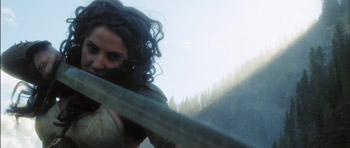 Bringing Tusk to life also meant stunt training for DeSantis, as it did for all the cast, especially in preparation for the climactic battle on Pendle Mountain where Tusk, Gregory, Tom and Alice go head-to-head against Malkin, Bony Lizzie, Sarikin, Strix, Virahadra and Radu and his assassins. The scene, which took 13 days to shoot and up to five cameras at any one time, required about eight weeks of preparation, not only to train the actors but to choreograph the fight in such a way that it maximized the set and hit the appropriate beats.
Bringing Tusk to life also meant stunt training for DeSantis, as it did for all the cast, especially in preparation for the climactic battle on Pendle Mountain where Tusk, Gregory, Tom and Alice go head-to-head against Malkin, Bony Lizzie, Sarikin, Strix, Virahadra and Radu and his assassins. The scene, which took 13 days to shoot and up to five cameras at any one time, required about eight weeks of preparation, not only to train the actors but to choreograph the fight in such a way that it maximized the set and hit the appropriate beats. Paul Jennings (The Dark Knight, RED 2), who acted as both second unit director and stunt coordinator, shares: 'It was part of my job to utilise as much of the space as we could because it's nice to show it all off. It's very much like choreographing a dance. It's not just breakaway swords and columns; you have to see the emotional changes within the fight. There have to be payoffs; you've got to feel like there are moments where they're going to lose and moments of victory. The audience has to feel an emotional stake in the outcome."
The allusion to choreography and dance rang true for Vikander, who studied dance for 10 years with the Royal Swedish Ballet School. The actress reveals: 'It was a big help because doing stunts is actually a dance. One of the best things about this profession is that you get the opportunity to try things that you would never otherwise do."
Barnes did the majority of his own stunts, and his enthusiasm came in handy when shooting the battle scene with the boggart that drags Tom beneath the river. Filming over about four days in a large water tank and using a gimbal, Barnes rode the imaginary monster that thrashed him about, spinning and dunking him in a water park ride run amok. For the task, Barnes had to learn how to use scuba-diving equipment. The scene required him to take off his mask and his regulator underwater, then hold his breath and wait for the call to action. After this intense sequence, it was up to the visual effects team to create the boggart.
Two-time Oscar®-winning visual effects designer John Dykstra (Spider-Man 2, Star Wars: Episode IV"A New Hope) walks us through his process: 'The boggart sequence was the biggest in terms of the resources we allocated to it because it involved a nonexistent character interacting with live actors and a real environment including jumping off a cliff, swimming in a river, going over a waterfall and riding the creature. You can imagine how difficult it is for an actor to fight with a creature that's 25 feet tall and not there. You have to give the actors eye lines and be careful about the space that the creature exists in so that the actors don't pass through parts of it. On the day, you must be ready to adapt to whatever happens and have enough of an understanding of the virtual creature to be able to look at a scene played with a live actor and visualize how they'll interact. And you have to do it on the fly."
To prep for such complex shots, the visual effects team started with pre-visualization, or 'pre-vis," which allows the filmmakers to compose and pace a scene even before they know where they're going to shoot it or exactly what the content will be. Pre-vis starts with translating the scripted page into a 3D digital model of set pieces and props that will be used in the film, as well as representations of the actors and their dialogue. Sometimes 'needle drop" music (existing music from other films) is laid over the sequence to paint a portrait of how the edit might work.
Dykstra elaborates: 'This provides a fairly accurate representation of things, such as where the camera moves play into the telling of the story. It allows us department heads to determine what each department would be responsible for. It also allows us to time the pacing and gives us a sense of scale. How wide should the shot be, how tight? How do the shots contribute to the emotional content of the scene? It gives us a road map to shooting."
When the sequence was then shot, several 'witness cameras" around the set captured the scene from multiple angles. 'They're just consumer video cameras," says Dykstra. 'Multiple cameras shooting the same action allow you to triangulate the object that's being photographed. The witness cams allow us to position a three-dimensional version of the actor in physical space relative to the virtual objects or creatures that we create."
Successful visual effects are often more about the psychology played out on set than the postproduction work. Dykstra offers: 'Visual effects require some mental gymnastics. Actors are more interested in how the visuals work in terms of the story or a characterization. They want to make sure their character understands whatever the virtual environment or creature is that you're creating. You have to explain to them that the tree is not just a tree. It's a tree that smells like vanilla and is as big around as you can possibly hug. At the bottom of it, the roots are slippery and the dirt is moist, and it's surrounded by ferns. You become a surrogate for the boggart or the animal or whatever. It's often not so much what you do as how you talk about it."
The filmmakers felt fortunate to land Dykstra as part of their team. Share sums: 'John worked on Star Wars; he was a pioneer. It was an unbelievable amount of fun to talk to him about this film and to watch his imagination spin. His ability to combine the real elements with the most cutting-edge digital effects provides a truly immersive experience. John and his team have created an environment that makes you feel like you're on a journey with these heroes."
The Seventh Son
Release Date: February 26th, 2015
Have You Seen This?
MORE


